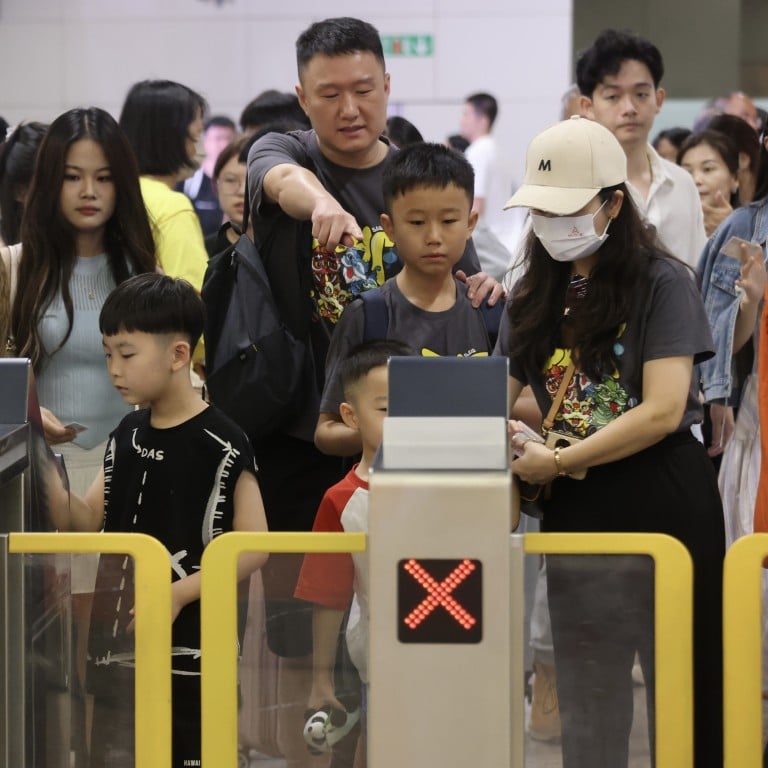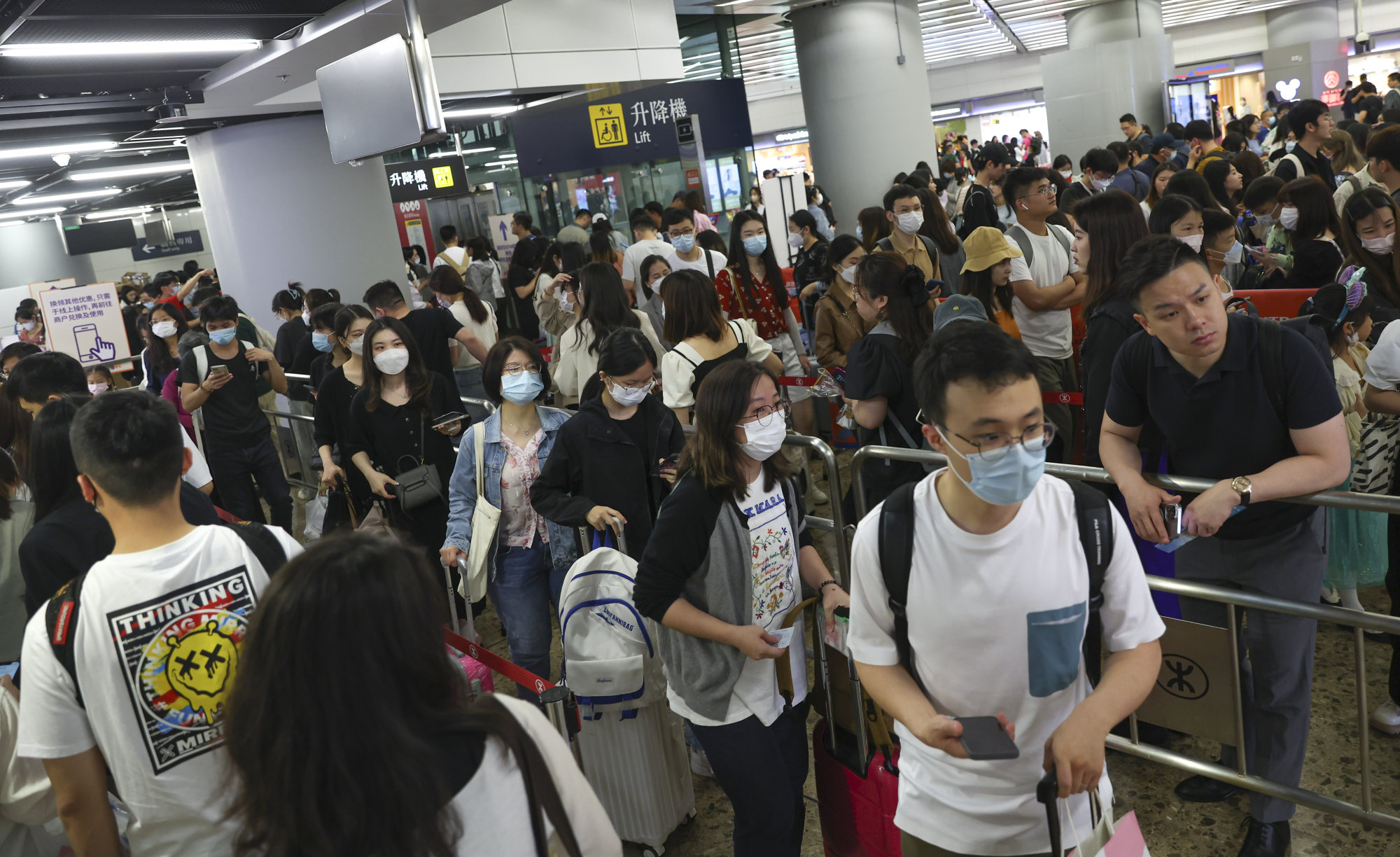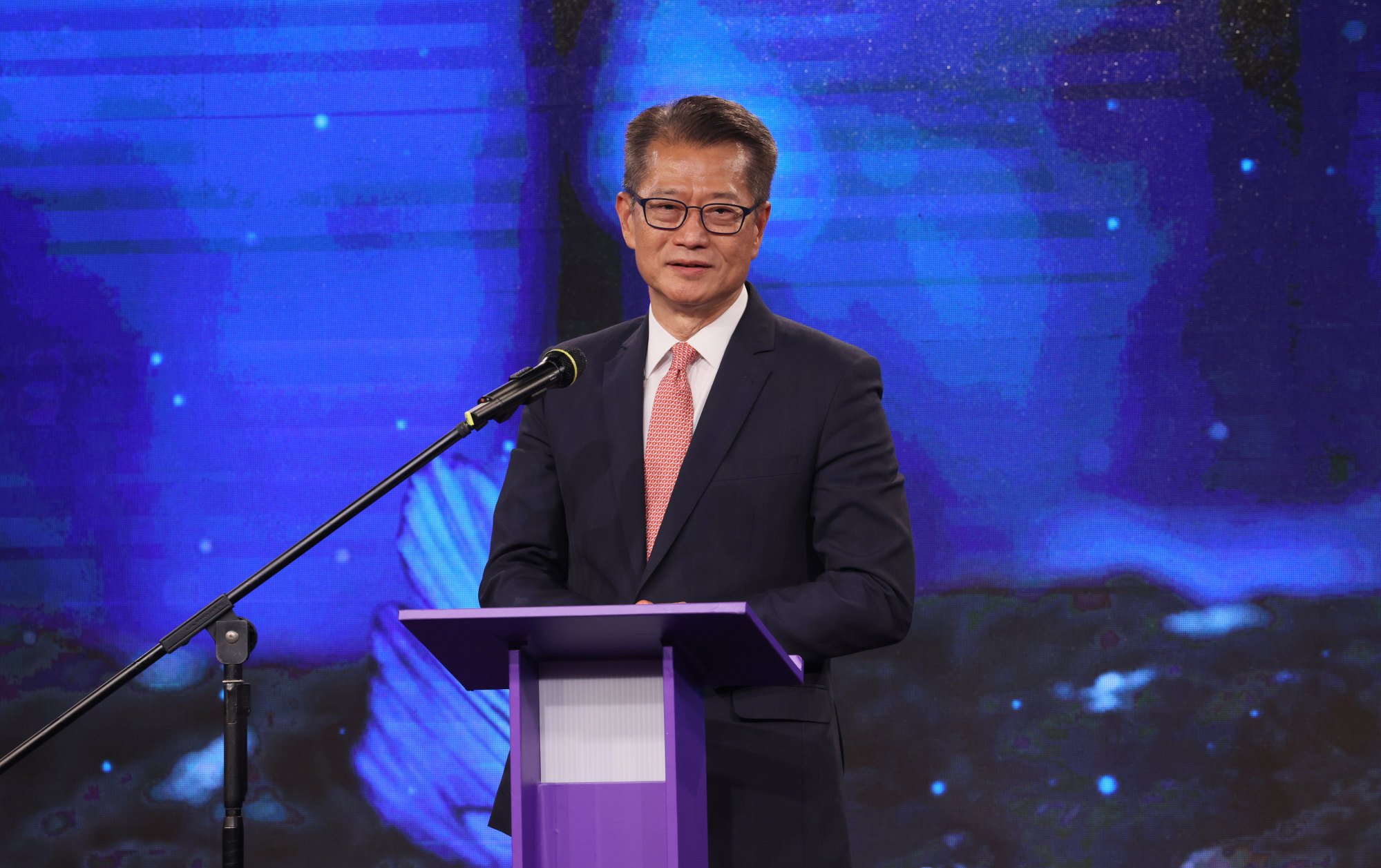
Number of passengers using Hong Kong’s cross-border high-speed rail surpasses pre-pandemic levels, exceeding 17 million
- Hong Kong-Shenzhen route has seen the ‘most significant growth’, MTR Corp says
- More than 100,000 passengers used service over National Day and Mid-Autumn Festival holidays
The number of passengers on the cross-border high-speed railway has exceeded pre-pandemic levels, surpassing 17 million this year, Hong Kong’s MTR Corporation has said.
The railway operator on Thursday also announced that passenger figures for the National Day and Mid-Autumn Festival holidays reached a record-high.
“During the National Day and Mid-Autumn Festival holidays … passenger numbers also hit a new high of more than 100,000,” the operator said.

The line linking the city with the neighbouring mainland Chinese city of Shenzhen had registered “the most significant growth” among the high-speed routes, the MTR Corp said.
Since March, mainland tourists have accounted for more than half of high-speed rail passengers and have topped 2019 levels since July.
Passenger numbers for the year hit 17 million over the weekend, more than the full figure for 2019, before the pandemic hit, according to the rail giant.
Tommy Tam Kwong-shun, managing director of Arrow Travel Agency and a member of the Travel Industry Authority, said the trains had gained in popularity because they were less time-consuming and their fares were cheaper, compared with flights.
“They tend to be more punctual, and you only need to arrive 15 to 30 minutes ahead of time, unlike the airport where you have to be there up to three hours in advance,” he said.
He added the stations being near urban areas was also a big plus as it offered more flexibility to travellers.

Hong Kong’s West Kowloon station currently connects the city to 73 mainland destinations, with the operator vowing to open more routes and stations in the future. Lines servicing Guangzhou East, Chengdu East and Zhanjiang West were added earlier this year.
Immigration Department statistics showed that nearly half a million people from the mainland visited the city between September 29 and October 2 this year, representing 87 per cent of total arrivals over the Mid-Autumn Festival and National Day long weekend. On October 1, visitors crossing the border peaked at 177,770.
Hong Kong’s MTR Corp urged to expedite platform screen door works after deaths
Fanny Yeung Shuk-fan, executive director of the Travel Industry Council, said newer modes of transport, such as the high-speed rail link and Hong Kong-Zhuhai-Macau Bridge, had made travelling across borders even more convenient, but also meant more visitors would not be staying overnight.
“Especially those in the Greater Bay Area, you can understand why they won’t stay overnight, because transport is really convenient,” she said. “I think this is very normal.”
According to the Tourism Board, 23 million people visited the city throughout the first nine months of the year, although about 11.4 million were same-day tourists, 85.4 per cent of whom were from the mainland.
At a conference earlier this week, Financial Secretary Paul Chan Mo-po said that passenger traffic levels at Hong Kong International Airport were also expected to return to about 80 per cent of pre-pandemic levels by the end of the year and would fully recover next year.
